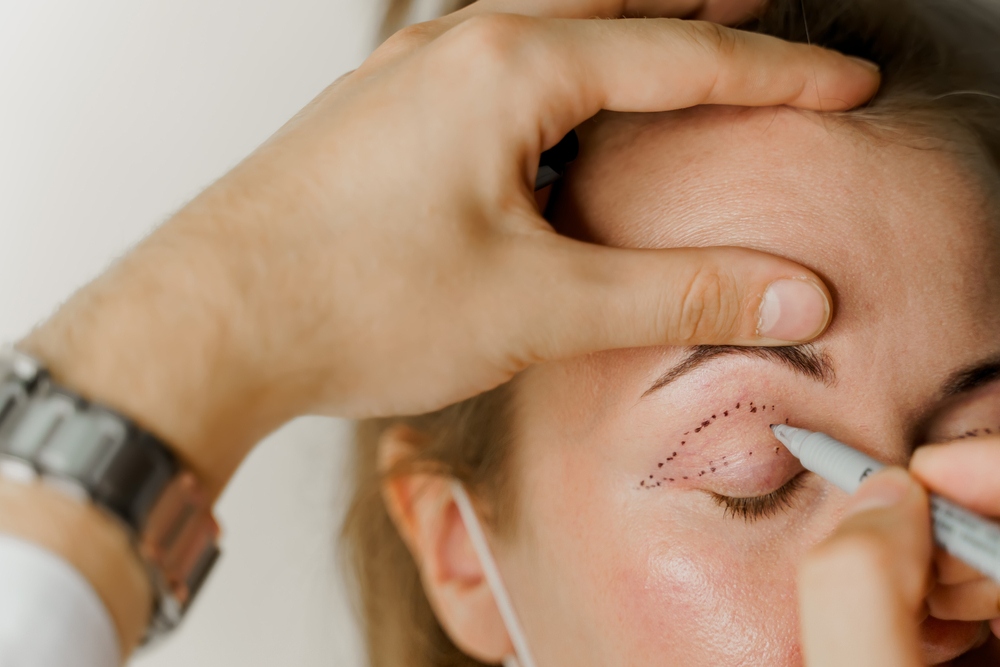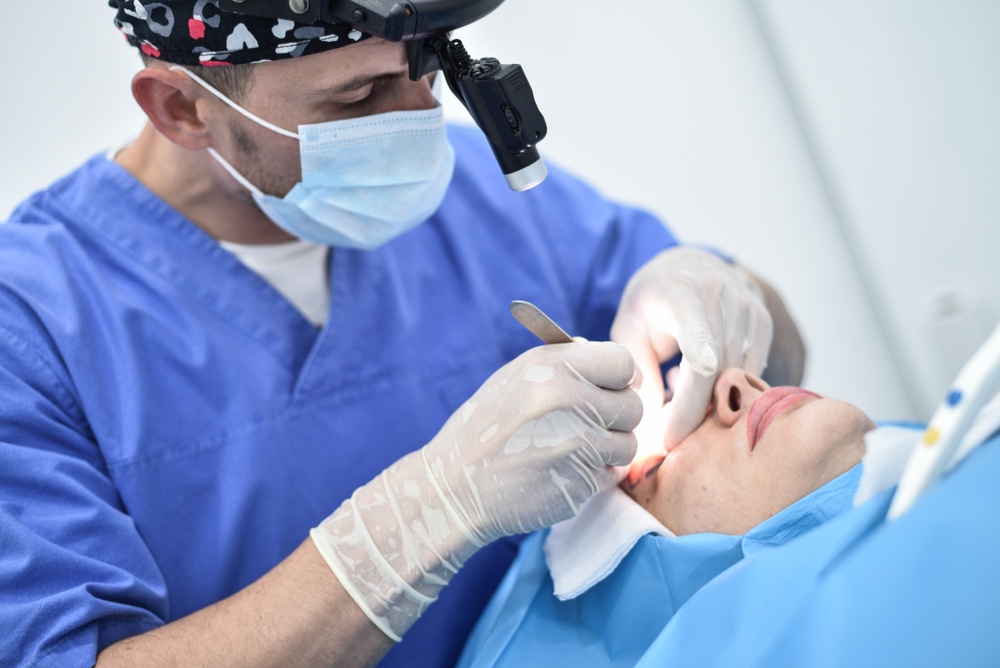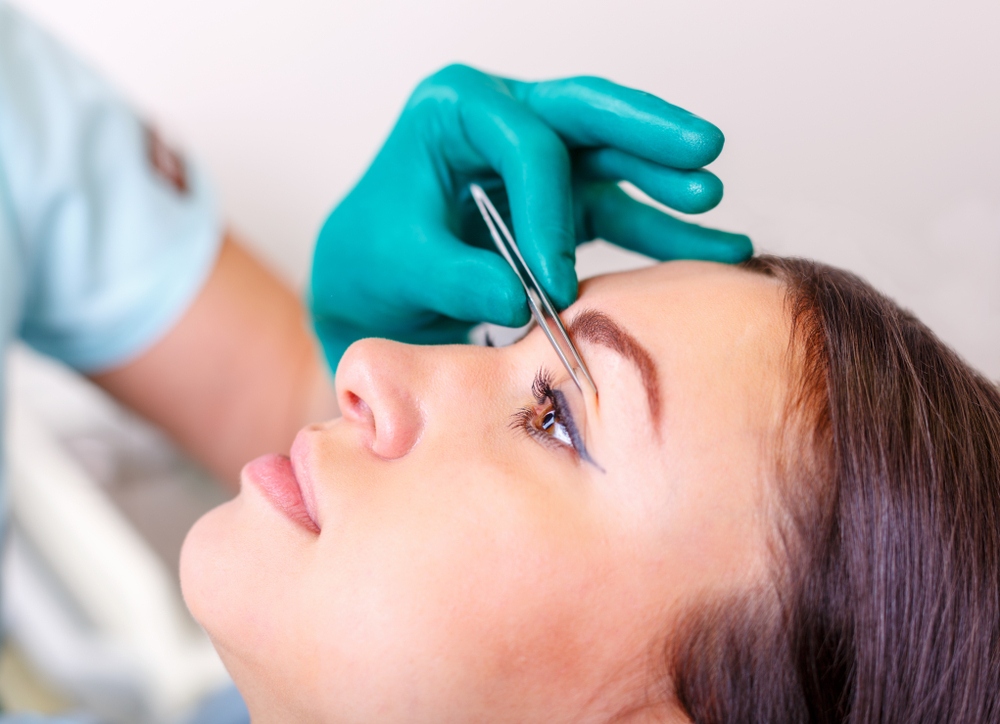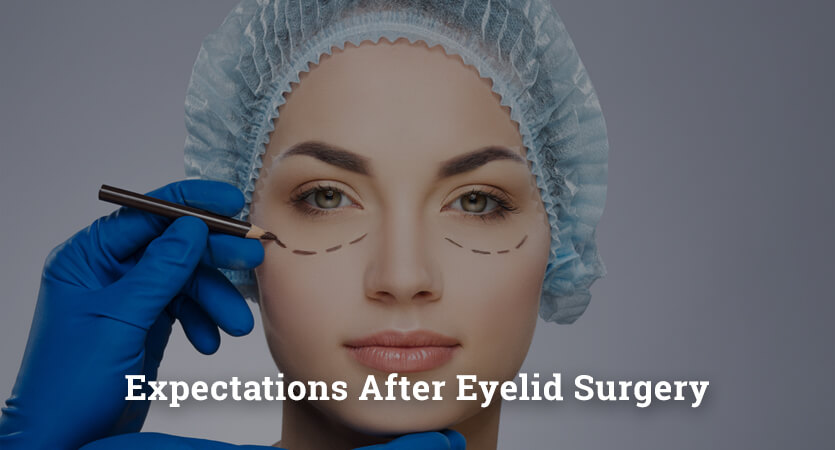A blepharoplasty, often known as “eyelid surgery,” is a surgical treatment used to reconstruct or restore an eyelid. Blepharoplasty is a cosmetic surgery performed on the upper or lower eyelids to remove extra skin and fat from around the eyes, with drooping eyebrows or eyelids repaired simultaneously. It is frequently utilized as a cosmetic method to aid patients in correcting specific aging symptoms that have subtly developed around their eyes.
The procedure is mostly carried out to improve eyesight and for cosmetic reasons since additional upper eyelid tissue may obstruct the top region of the visual field. Blepharoplasty may be used to treat the following conditions:
- Excess, droopy, sagging, or loose skin on the upper and lower eyelids
- Eyes beneath the bags
- Eyelids that seem swollen due to fat protrusion
- Reduced peripheral vision as a result of the eyelid’s deviation from its normal shape
Many people view eyelid surgery as a way to appear younger, even while it may treat these actual changes affecting the eyelid skin. Blepharoplasty may rejuvenate the eyes by erasing fine lines and tightening the skin around them. Blepharoplasty is frequently combined with other facial cosmetic treatments, such as facelifts, and brow lifts, to create a more comprehensive strategy for correcting facial aging.
Eyelid Surgery Involve:

A blepharoplasty entails your surgeon removing any extra tissue contributing to the appearance of your eyelids being heavy, weary, or drooping, depending on whether you’re having upper eyelid surgery, lower eyelid surgery, or both.
Upper Eyelid Surgery
Upper eyelid blepharoplasty is a procedure performed on the upper eyelids to improve the tone and tightness of the skin between the brows and the top eyelashes. It will help to lessen the quantity of excess skin that could give the upper lids an unkempt appearance. Your doctor will create an incision in the upper eyelid region where the skin naturally folds to reduce scarring. They will trim away any extra tissue (such as fat, muscle, or skin) that is the cause of the heavy eyelids before using tiny sutures to close the wound.
Lower Blepharoplasty
Lower eyelid blepharoplasty is a procedure to correct sagging skin and bags under the eyes. This procedure removes excess fat, skin, and muscle that may contribute to the appearance of dark circles, wrinkles, and puffiness. Lower eyelid blepharoplasty is almost always cosmetic. To execute a lower eyelid blepharoplasty, a small incision must be made along the lower lids, either inside the lid or outside the lash line.
Through this tiny incision, fat and excess tissue are removed or repositioned. This procedure tightens and repositions the lower eyelids, giving the face a more contoured appearance. Patients feel more youthful after lower eyelid blepharoplasty.
What to Expect During Eyelid Surgery

Patients with blepharoplasty eyelid surgery may go home the same day since it is an outpatient treatment. To ensure a pain-free and pleasant procedure, the patient will receive a sedative and local anaesthetic to numb the eyelids before starting.
If the upper and lower eyelids need to be treated, the doctor will typically start with the upper eyelids after being sedated and given anesthesia. They will make an incision along the fold of the eyelid or eyelid crease to remove or reposition the fat, muscle, and skin as necessary and then close the incision with dissolvable sutures.
The lower eyelid is then treated in a manner identical to the upper, with tissues being redistributed and removed. Inside the natural crease, a significant incision was made directly beneath the lashes. In rare circumstances, a tiny incision within the lower eyelid may be made to remove or rearrange fat. The benefit of this is that the cut won’t be visible from the outside.
The blepharoplasty eyelid surgery’s final result will be the main draw by eliminating noticeable scars. The surgeon will always strive to make incisions on the top and lower eyelids where the supporting structure of the eye would naturally cover scars. It could take up to two hours to conduct a specific upper and lower eyelid blepharoplasty surgery.
What Should I Expect After Eyelid Surgery?

Although eyelid surgery rarely results in pain or discomfort, bruising, and swelling are frequent aftereffects. After surgery, your eyelid may feel painful and restricted and be runny, dry, sticky, itchy, or light-sensitive. For a few days, your vision can be fuzzy. To relieve your pain and discomfort, your doctor will prescribe medication.
Depending on the particular technique utilized in your situation, the stitches may be coming out on their own, or you may need to have them removed. After the treatment, permanent stitches are typically removed three to five days later.
On days after surgery, be prepared for bruising and swelling around the eyes. Use multiple pillows to keep your head raised while you’re sleeping. By doing this, swelling will be decreased. Your doctor will provide specific instructions on using cold compresses and care for your eyelids after surgery. If your blepharoplasty addresses ptosis or eyelid droopiness, your eyelids may not entirely shut in the initial stages of recovery.
Tips for eyelid surgery recovery
You may easily recover by using the advice provided below:
- Use more pillows than usual to keep your head up while sleeping to reduce oedema.
- Apply a cold pack to your eyes if your surgeon has advised you.
- When outside, use wraparound sunglasses to prevent discomfort from glare, winds, dust, or dirt
- As for properly cleaning your eyes and which ointments or drops to use, heed your surgeon’s recommendations.
- For at least a week or as long as your surgeon has advised, refrain from smoking, swimming, or doing anything else that might make you sweat.
Who is a suitable candidate for Eyelid Surgery?

Most people who want eyelid surgery are doing so as anti-ageing measures. Although the skin around your eyes will naturally sag as you age, consider having this surgery if the effects irritate you. Additionally, candidates with noticeable bags beneath their eyes or sagging eyebrows seek blepharoplasty.
A blepharoplasty may have purposes for some persons other than aesthetic ones. If sagging skin impairs your vision, you might be an excellent candidate for this operation. You are also a suitable candidate if you don’t smoke or have chronic conditions that could hinder your recovery.
FAQs
How painful is eyelid surgery?
One of the slightly painful cosmetic procedures is eyelid surgery. Aside from a small discomfort on the first day, you’ll recover quickly and see benefits soon. Thus, the method is manageable, but you might have further queries.
How long should you recover from eyelid surgery?
It would help if you planned to rest and recover for seven to fourteen days after having blepharoplasty or eyelid surgery. After two weeks, you can enjoy your fresh, youthful eye region.
How long after a blepharoplasty will my vision remain blurry?
Following surgery, your eyesight could be foggy for some time. After two or three days, it usually gets back to normal. About two to four weeks are needed for full healing. You can experience some swelling around your eyes around that period.
How long will I appear normal after blepharoplasty?
The eyelids will be bruised and puffy for one to three weeks following blepharoplasty surgery. After one to three months, most patients claim that their eyes look normal and even better.
Is eyelid surgery worthwhile?
The procedure is worthwhile for those who desire to look younger and more rested in and around the eyes. The effects are subtle but significant, and the recovery is quick.
Conclusion
Blepharoplasty is typically used to correct common ageing indications around the eyes. Speak with a dermatologist about your choices if you’re bothered by extra skin or sagging around your eyes.


